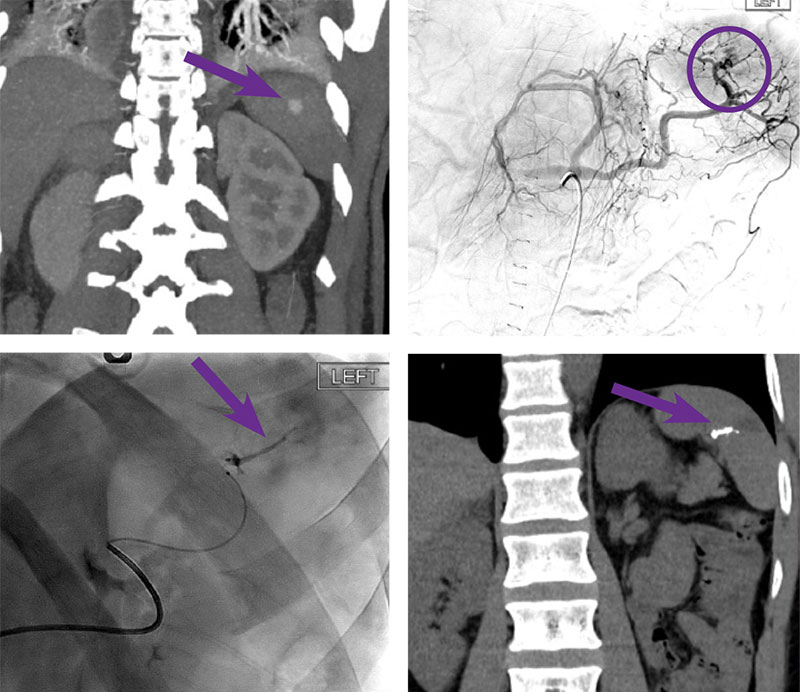Splenic pseudoaneurysm embolization
Courtesy of Dr. Mikin Patel I University of Chicago
Presentation
45-year-old male, pedestrian vs auto with multiple injuries. Emergent left diaphragmatic rupture repair, reduction of stomach, and left tube thoracoscopy. CT demonstrated a moderate sized hemoperitoneum.
Intervention used
Arterial access was gained via the right common femoral artery. RC1 catheter was then used to select the celiac artery and an angiogram was performed. There is a pseudoaneurysm arising from a segmental branch of the superior aspect of the spleen. Using a Glidewire™ Hydrophilic Coated Guidewire, the RC1 catheter was advanced into the splenic artery near the hilum and repeat angiogram was performed. No evidence of arterial extravasation. A 2.8 F Progreat™ Microcatheter, as well as a microwire were then navigated into the abnormal superior segmental splenic artery branch with small amount of contrast injected confirming appropriate position. Next, the superior segmental splenic artery branch was embolized using 0.2 cc of Obsidio Embolic.
Outcome
Patient stabilized post procedure however required surgical repair of diaphragmatic rupture.

Results from case studies are not necessarily predictive of results in other cases. Results in other cases may vary.
